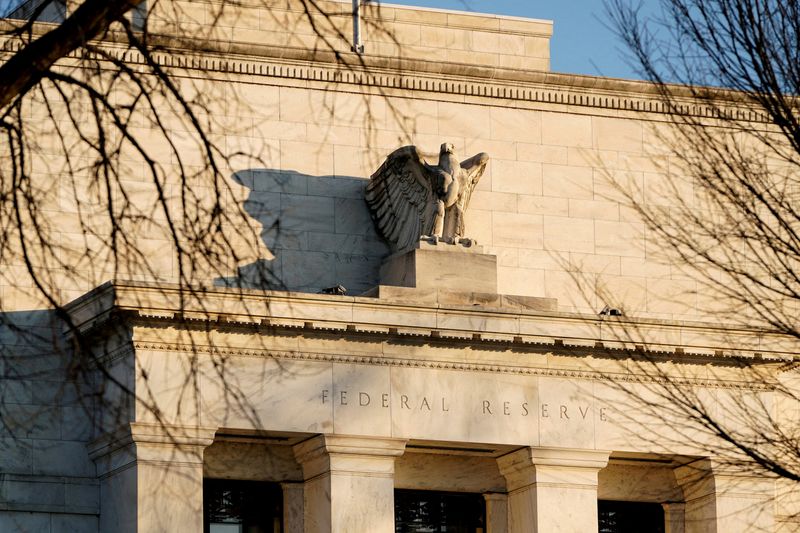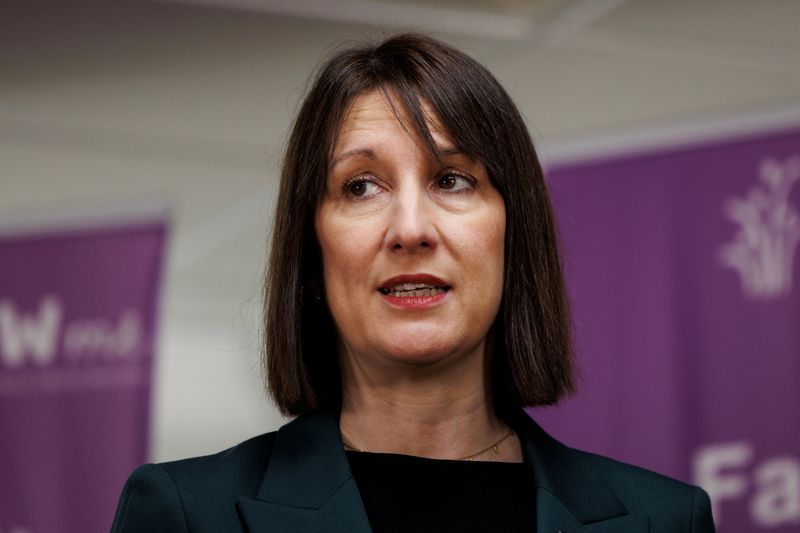By Lucia Mutikani
WASHINGTON (Reuters) -U.S. retail sales increased slightly more than expected in October as households boosted purchases of motor vehicles and electronic goods, suggesting the economy kicked off the fourth quarter on a strong note.
The fairly upbeat sales report on Friday, which was accompanied by sharp upward revisions to September’s data, together with news of a rebound in import prices last month, prompted traders to pare back expectations that the Federal Reserve would cut interest rates in December. Fed Chair Jerome Powell said on Thursday “the economy is not sending any signals that we need to be in a hurry to lower rates.”
“Retail sales data today make many in the markets wonder if another rate cut at the December meeting is warranted at all,” said Christopher Rupkey, chief economist at FWDBONDS. “With fiscal policy expected to shift into high gear on the pro-growth stimulus side, perhaps the Fed’s monetary policy should not be putting another log on the fire to fuel growth by lowering rates, as it could lead to a return of inflation.”
Retail sales rose 0.4% last month after an upwardly revised 0.8% advance in September, the Commerce Department’s Census Bureau said. Economists polled by Reuters had forecast retail sales, which are mostly goods and are not adjusted for inflation, would climb 0.3% after a previously reported 0.4% gain in September.
Sales at auto dealerships accelerated by 1.6%, while receipts at service stations gained 0.1%. Sales at electronics and appliance stores rebounded 2.3%. Receipts at food services and drinking places, the only services component in the report, increased 0.7% after rising 1.2% in September. Economists view dining out as a key indicator of household finances.
Building material and garden equipment store sales rose 0.5%, likely boosted by rebuilding efforts in areas devastated by Hurricanes Helene and Milton. Online retail sales edged up 0.3%, despite Amazon (NASDAQ:AMZN)’s Prime Day promotion.
But sales at clothing stores fell 0.2% while those at furniture outlets declined 1.3%.
There were also decreases in sales at miscellaneous retailers, health and personal care as well as sporting goods, hobby, musical instrument and book stores.
Robust consumer spending helped the economy maintain its strong pace of growth last quarter. Consumption is being largely underpinned by low layoffs, with additional help from strong household balance sheets thanks to a stock market rally and high home prices. Though inflation has not made much headway in recent months, it is on a downward trend, raising households’ purchasing power. Household savings also remain lofty.
Concerns have been raised that growth is mostly being driven by middle- and upper-income households, which have more flexibility and substitutability of consumption. But Bank of America card data shows spending resilient across income groups.
“We do not see signs of increased reliance on credit cards in any income cohort,” said Aditya Bhave, a U.S. economist at Bank of America Securities. “However, we note that higher-income households appear to be outperforming in certain service sectors such as airlines, lodging, entertainment and cruises.”
Economists expect retailers will enjoy a fairly decent holiday shopping season, which starts later this month.
STRONG UPWARD REVISION
Retail sales excluding automobiles, gasoline, building materials and food services dipped 0.1% last month after an upwardly revised 1.2% gain in September. These so-called core retail sales, which correspond most closely with the consumer spending component of gross domestic product, were previously reported to have jumped 0.7% in September.
But data for August was revised lower, suggesting that third-quarter consumer spending growth pace could be trimmed down to a 3.5% annualized rate from the 3.7% pace estimated last month. Nonetheless, the sharp upward revision to September’s core retail sales put consumer spending and the overall economy on a higher growth trajectory.
Economists estimated that consumer spending was growing at a 3.0% rate early in the October-December quarter.
Hurricanes and a strike by factory workers at Boeing (NYSE:BA), which depressed industrial production in September and October, were expected to temporarily slow economic growth to around a 2.5% pace in the fourth quarter. The economy grew at a 2.8% rate in the third quarter.
Shortly after the data, financial markets lowered the odds of a 25-basis-point rate cut at the Fed’s Dec. 17-18 meeting to 58.4% from 61.6% earlier, CME Group’s (NASDAQ:CME) FedWatch Tool showed. The odds of rates being unchanged increased to 41.6% from 38.4.
Some economists see a rate cut next month as a very close call, citing the lack of progress in lowering inflation back to the U.S. central bank’s 2% target.
Stocks on Wall Street traded lower. U.S. Treasury yields rose, with the 10-year note briefly hitting a 5-1/2-month high. The dollar edged up against a basket of currencies.
The Fed last week cut its benchmark overnight interest rate by 25 basis points to the 4.50%-4.75% range. The central bank embarked on its policy easing cycle with an unusually large half-percentage-point rate cut in September, its first reduction in borrowing costs since 2020. It hiked rates by 525 basis points in 2022 and 2023 to tame inflation.
A separate report from the Labor Department’s Bureau of Labor Statistics showed import prices rebounded 0.3% in October after an unrevised 0.4% decline in September. Economists had forecast import prices, which exclude tariffs, would slip 0.1%.
In the 12 months through October, import prices increased 0.8% after dipping 0.1% in the 12 months through September.
Imported fuel prices rose 1.5% after two straight monthly declines. Food prices fell 1.6%, declining for the third consecutive month. Excluding fuels and food, import prices gained 0.4% after rising 0.3% in September.
The so-called core import prices increased 2.2% on a year-on-year basis in October despite the dollar’s appreciation against the currencies of the main U.S. trade partners. A rising dollar normally dampens import price pressures.
Government data this week showed consumer prices increased 0.2% for a fourth straight month in October while producer prices picked up 0.2%.

The import price data cemented economists’ estimates of a 0.3% increase in October in the personal consumption expenditures price index, excluding the volatile food and energy categories. That would match September’s gain and lift the annual increase in core inflation to 2.8% from 2.7% in September. The core PCE price index is one of the measures tracked by the Fed for monetary policy.
“While we expect a continued broad-based cooling in consumer price inflation overall next year, the outlook for goods prices in particular may be clouded by potentially offsetting effects from the incoming administration’s trade policies and further dollar appreciation,” said Michael Hanson, an economist at JPMorgan.






